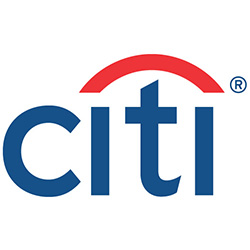Strategy
Citi Private Bank Says Business Model Robust, Upbeat On Europe, Illiquid Asset Opportunities

The private bank has set out its business strategy and investment ideas for Europe, arguing that its model is well suited to coping with geopolitical storms.
Citi Private Bank’s business model of catering to ultra-high net
worth clients puts it in a strong spot to weather geopolitical
jitters such as Brexit, and the market opportunity in Europe is
wide, senior executives say.
The private banking arm of the US-listed group, which at the end
of last year held $374 billion of client assets, operates in
an environment where Europe, Middle East and Africa has
72,000 families each with a net worth of €30 million ($31.7
billion), Luigi Pigorini, region head, EMEA, at Citi Private
Bank, told journalists this week. That number could rise
significantly based on current trends in about a decade’s time,
he said.
For the past four to five years, the private bank has logged
growth in revenue and assets under management of 6-10 per cent,
he continued. “We continue to grow in terms of client acquisition
and we are very focused on the type of clients we want,” he
said.
The bank serves UHNW clients with wealth of at least $25 million;
many of Citi Private Bank’s clients are far richer than that and
can be described as “citizens of the world” with sophisticated
investment and advisory needs, with a requirement to be shielded
from volatility around events such as Brexit, said Jeremy
Knowland, global market manager, UK private bank.
“We think the UK market is still in a strong state. There is
still clearly uncertainty around Brexit...clients we are trying
to serve, such as these 'global citizens', we see them having a
relationship with a global player [like Citi],” he continued.
Investment
On investment matters, Gavin Rankin, head of managed investments
for the EMEA region, stressed how the private bank now puts more
emphasis than before on its discretionary capacity, giving
particular focus on areas such as alternative, illiquid asset
classes (private equity, real estate and infrastructure) and
themes in investment such as disruptive innovations
(robotics).
“Clients are very interested in private equity and real estate
and it is a big part of what we do,” he said.
To illustrate its activity in the private equity space, for
example, Rankin said the bank looks at different forms of funding
for pre-initial public offering companies, an area that has
changed: the pre-IPO period from inception of a business has
widened from around three years about 15 years ago to around
eight years today.
Within the alternatives space, however, the bank is far less
exposed to hedge funds than it was 10 or even five years ago.
Returns in recent years and periods of high correlations between
markets have made for a tough environment for the hedge fund
sector, Rankin said. If interest rates start to rise, however, as
they are expected to in the US, he said this should improve
the situation for hedge funds.
Part of the problem with hedge funds is a crowding of the space,
he said, noting a comment made that there are more hedge funds
around the world than there are stocks on the New York Stock
Exchange. “It’s a very Darwinian space,” Rankin said.
Other alternative asset classes spaces, such as private credit,
might be considered to suffer the same potential problem of
“overcrowding” and eventual falling returns as has happened to
hedge funds. When this point was put to him, Rankin said this
issue highlighted why there is a need for the bank to identify a
“window” of opportunity in such a space. Such opportunities tend
to come up because of disruptions, such as the freeze in bank
lending post-GFC, he said. “That doesn’t last forever,” he
continued.
Pigorini added that these issues highlighted a benefit
for the bank in adopting an open architecture approach to
investments. The bank’s teams can recommend to clients to switch
out of a fund, for example, if Citi thinks a strategy is drifting
off its objective or not working as intended, he said.
Regulation, booking centres
Asked about the regulatory environment, Pigorini noted that an
issue for a private bank such as Citi is that some of its UHNW
clients are still regarded by financial watchdogs in some sense
as retail clients, while they are also affected to a degree by
regulation of wholesale banking, given that such clients can have
considerable wealth. To keep on top of both sets of regulations
while maintaining a strong reputation requires heavy resources,
he said.
The bank has learned over the years how to absorb and process
regulations “coming down the pipe” and become better at handling
these, he continued.
Pigorini said that where certain banking services had become
increasingly commoditised, the bank has outsourced some of this
activity, such as to Ireland and Poland. “This is not necessarily
displacing jobs in the UK or Switzerland,” he said.
Asked about the trend of some banks changing booking centres,
either in favour of Asia or in the case of firms such as Barclays and Societe Generale,
cutting private banking in Asia, Pigorini said: “My counterpart
in Asia tells me that people come here [Asia], and at the
beginning think it is all like manna but then quickly
realise that it is as competitive a marketplace like any other
and some end up retrenching.”
“We are very focused on our home market [in EMEA] and are going
to take advantage of it,” he said. “Competitors are becoming
fewer and that is helping us.”
